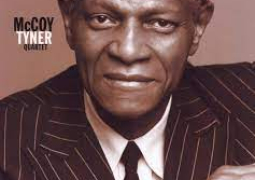As we come to the end of BLACK HISTORY MONTH which is celebrated in the U. K. every October, it is important to note that the observance of this month originated in the United States where it is also known as African American History Month. The month was chosen to celebrate the African diaspora including African American History, and has received official recognition from the governments of the U.S. and Canada and more recently observed in Ireland and the U.K. Nowadays, the celebration of Black History Month has gone viral and is observed in many parts of the world with pride and resolve.
It is also noteworthy to mention here that the precursor to Black History Month was created in 1926 when African American historian Carter G. Woodson and the Association for the Study of Negro Life and History declared for the second week of February to be observed as “Negro History Week”. This date was chosen because it coincided with the birthday of Abraham Lincoln on February 12th, and that of Frederick Douglas on February 14th. At that time Woodson had concluded that the teaching of Black History was essential to ensure the physical and intellectual survival of the race within the broader society.
While we continue to celebrate the significance of this event, we also want to draw a correlation between this activity and its relation to the development of Jazz and the contribution of Jazz to an understanding of the African American experience in the struggle for Freedom and Civil Rights.
Jazz predicted the civil rights movement more than any other art form in America. Jazz musicians responded to the force of the movement by recording and performing their music, and the jazz community was at the forefront of the civil rights movement. It had a massive impact on jazz, and many jazz musicians were actively involved in the movement. From the days of bebop when jazz stopped catering to popular audiences and instead became solely about the music and those who played it, jazz has been symbolically linked to the civil rights movement. This music which appealed to whites and blacks alike, provided a culture in which the collective and the individual were inseparably linked and in which one was judged by his ability alone , and not by race, gender or any other factors. Jazz musicians took up the cause, using their celebrity and their music to promote racial equality and social justice.
The impact of the civil rights movement on jazz, and the reaction of jazz musicians to the civil rights movement were more notable among female jazz performers who used the stage to expose inequality and social injustice. The late Miriam Makeba of South Africa and Nina Simone of North Carolina, USA, were visible women in the civil rights movements of their countries while being exceptional jazz singers. The civil rights movement grew and developed side by side with a new movement in Jazz called the Free Jazz Movement.
Jazz music grew and developed in a process of gradual change with many twists
and turns, and it will be impossible to comprehend the emergence of the Free Jazz Movement without understanding how it fed on a powerful cultural shift in American society during that period. During the late 50’s and early 60’s, the word “Freedom” stood out as a politically charged word in American public discourse and it would be difficult to find a term that was more explosive and laden with varieties of meaning being proclaimed with more emotion during those tumultuous years. “Freedom” was very much something to live for, or, for a few, even to die for. There were the “Freedom Riders”, the “Freedom Singers”, and there was the “Freedom Vote”. The word was imprinted on the public’s consciousness and dramatized in speeches by Dr. Martin Luther King. It was sang in hymns and brandished at all battlegrounds of the civil rights movement.
The influence of this Freedom Movement on Free Jazz was therefore very visible and expressive. However, the sociopolitical ramifications of this music are in many ways decisive in distinguishing the new free jazz players from the older generation of experimental jazz performers. From a purely musical point, freedom i. e. atonality in jazz music had appeared many years before Ornette Coleman and Cecil Taylor raised it into a decisive issue. But all of these precursors of free jazz were white musicians and representatives of the status quo.
In contrast, the proponents of free jazz who came into prominence at the close of the 50’s were almost all outsiders: as African Americans they were outsiders from mainstream society and as musical renegades they were outsiders from mainstream jazz. Many of them lacked access to concert halls, grants, commissions and other symbolic measures of artistic achievement. One of those musicians was a guy called Ornette Coleman.
During his formative years in Los Angeles, free jazz pioneer Ornette Coleman worked as an elevator operator in a department store and pianist Cecil Taylor labored as a dishwasher in a restaurant. In his early teens, Coleman acquired an alto saxophone, but struggled to learn the rudiments of the horn. He however, persevered and continued to develop and grow as a musician defying all the odds while sticking to his style of improvisation. In addition to being known as a saxophone player, Coleman was also an accomplished violinist, trumpeter and composer. He is one of the major innovators of the free jazz movement of the 1960’s and is closely associated to avant-garde jazz and jazz rock.
His birth name is Randolph Denard Ornette Coleman. He was born in Fort Worth, Texas, USA on March 9th 1930. He attended I.M.Terrell High School in Fort Worth and was a member of the school band until he was dismissed from the band for too much improvisation. While in school, he began performing R&B and bebop initially playing the tenor saxophone and started his own band called Jam Jivers with fellow students. He later switched to alto sax which has remained his primary instrument to date. Coleman’s approach to harmony and chord progression was much less rigid than that of the bebop performers, and he was very much interested in playing what he heard rather than fitting into predetermined chorus structures and harmonies. He was known for playing “in the cracks” of a scale which led many musicians in Los Angeles to regard his playing as being out-of-tune. Nonetheless, pianist Paul Bley was an early supporter and musical collaborator.
In 1958, Coleman led his first recording session for Contemporary Records with the release of “Something Else”… the music of Ornette Coleman- featuring Don Cherry on trumpet, Billy Higgins on drums, Don Payne on bass and Walter Norris on piano. In 1959, he made his last release on Contemporary entitled- “Tomorrow is the Question! - A quartet album which featured Shelly Manne on drums and excluded the use of piano which he would not use in his music until the 90’s. Later in 1959, he brought a group of musicians together including Charlie Haden on bass with Cherry and Higgins playing their usual roles and signed a multi-album contract with Atlantic Records. The album “The Shape of Jazz to come” was released the same year and was referred to as a”watershed event in the genesis of avant-garde Jazz”. Some musicians saw Coleman as an iconoclast, but others including conductor Leonard Bernstein and composer Virgil Thomson regarded him as a genius and an innovator. His quartet received a lengthy engagement at New York’s famous Five Spot club and support came from other quarters such as the Modern Jazz Quartet and Lionel Hampton.
In 1960, Coleman recorded the album “Free Jazz”-A Collective Improvisation, which featured a double quartet including Don Cherry and Freddie Hubbard on trumpet, Eric Dolphy on bass clarinet, Haden and Scott La Faro on bass, and both Higgins and Ed Blackwell on drums. Although Coleman is notably one of the pioneers of free jazz, he did not entirely approve of the term and in-fact later explained that the term “Free Jazz” was used by him only as the title to an album and not meant to declare a new form of jazz. It should be noted here that Coleman’s music contains a considerable amount of composition and his melodic material strongly recalls the melodies that Charlie Parker wrote over standard harmonies. He very rarely played standards, concentrating on his own composition of which there seemed to be an endless flow. Between 1965 and 1967, Coleman signed with Blue Note Records and released a number of recordings starting with the recording of “At the Golden Circle Stockholm”. In 1966, he recorded “The Empty Foxhole”, a trio with Haden, and Coleman’s son Denardo Coleman- who was only ten at the time. Coleman was criticized for this initiative and some thought that he did it as a publicity stunt. Others however, noted that the young Coleman, despite his youth, had studied drumming for several years and needed the experience for his development. Denardo has since matured into a respectable musician and has been his father’s primary drummer since the late 1970’s. Ornette was also interested in string textures and in 1962 he released the album “Town Hall”, and in 1972 he came out with “Skies of America”, each of these releases being string arrangements.
In later years, Coleman like Miles Davis before him took to playing with electrified instruments. Albums like “Virgin Beauty” and “Of Human Feelings” used rock and funk rhythms, sometimes referred to as free funk. These performances have the same angular melodies and simultaneous group improvisations, something Joe Zawinul referred to as “nobody solos, everybody solos”. In 1988, Coleman released the album “Virgin Beauty” with Jerry Garcia playing guitar on three tracks. In 1993, he joined the rock band “Grateful Dead” on stage playing the band’s songs, and earlier in 1985, he joined Pat Metheny and recorded “Song X”. This album was released under Metheny’s name but Coleman was essentially the leader of this project, contributing all the compositions in the album. Coleman’s notoriety was also felt beyond the borders of the U.S. In 1990, the city of Reggio Emilia in Italy held a three-day “Portrait of the Artist” featuring a Coleman quartet with Cherry, Haden and Higgins. The festival also presented performances of Coleman’s chamber music and the symphonic “Skies of America”. The 1990’s saw a lot of work from Coleman, and in 1996, he again started working with piano players on his recordings.
The period of 2000s, witnessed Coleman receiving numerous awards and honors. In 2004, he was awarded The Dorothy and Lillian Gish Prize, one of the richest prizes in the arts. In 2006, he released a live album titled “Sound Grammar” with his newest quartet, his son Denardo playing drums and two bassists, Gregory Cohen and Tony Falanga. This album won a Pulitzer Prize for music in 2007.In that same year; he was honored with a Grammy award for lifetime achievement in recognition of his legacy. In 2009, he received the Miles Davis Award and in 2010, he was awarded an honorary degree in music from the University of Michigan.
Coleman died in 2015, but until his death, he played music that pushed him into unusual situations, often with younger musicians or musicians from radically different musical cultures.




